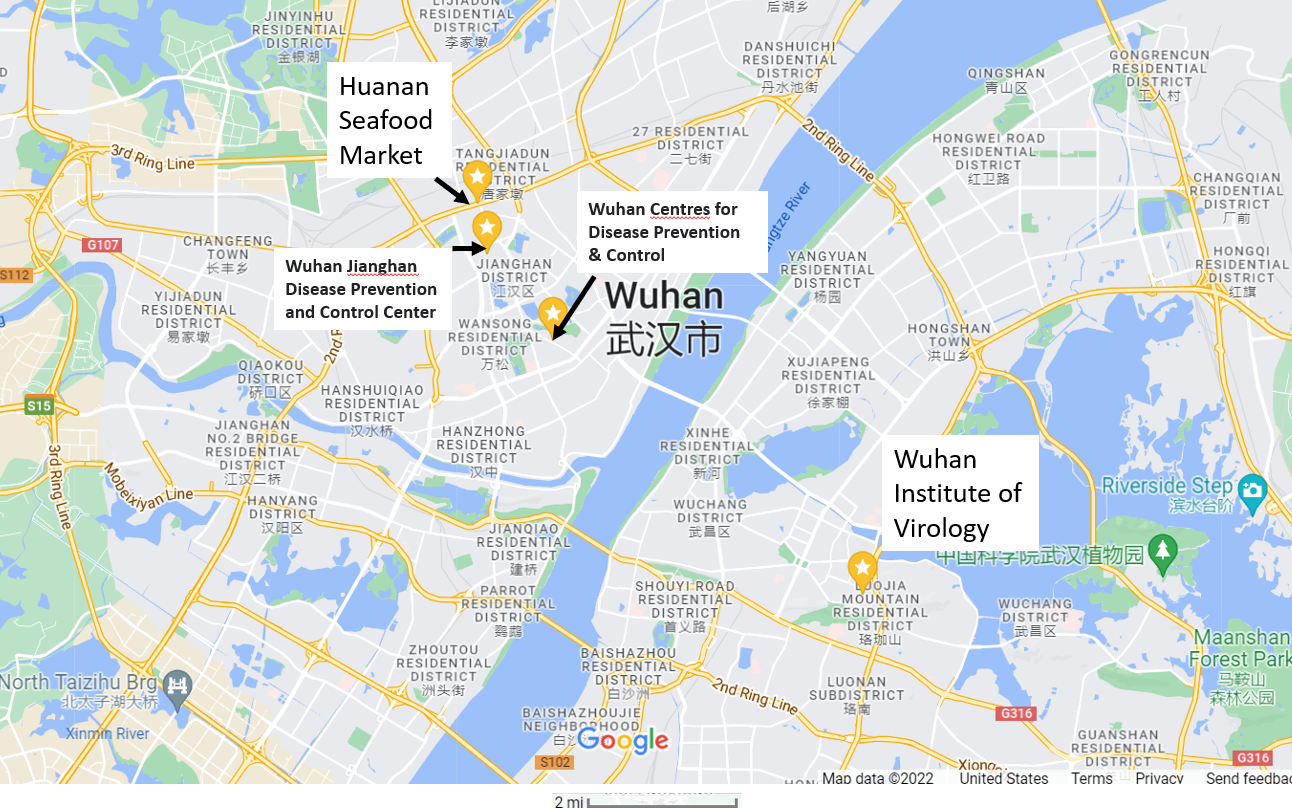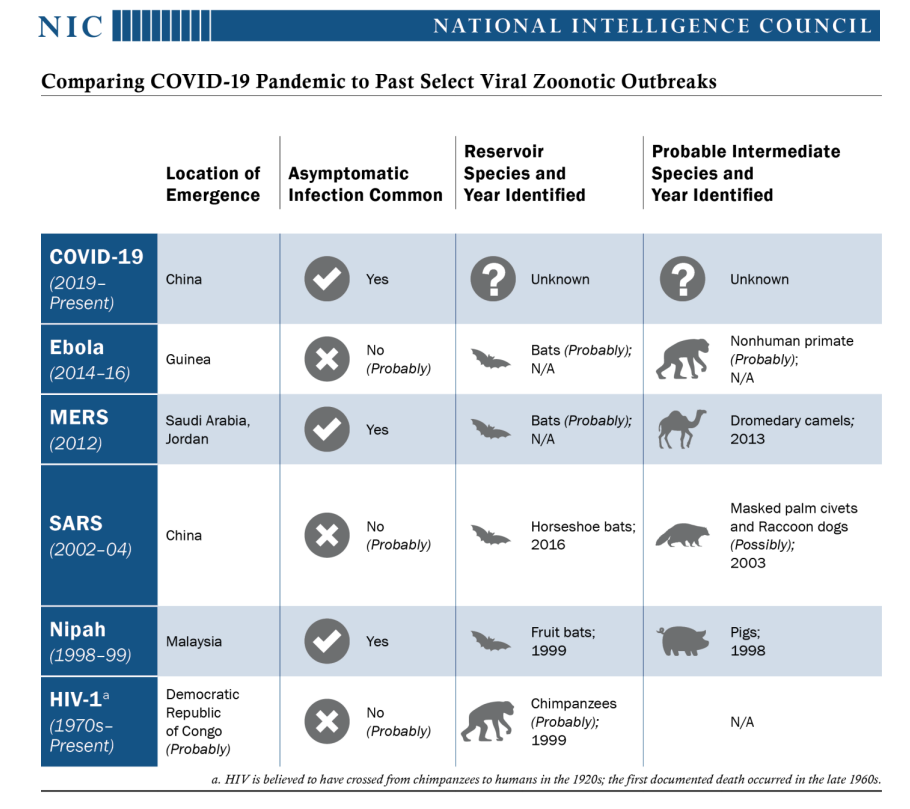By Kent R. Kroeger (Source: NuQum.com; August 2, 2022)
With the formal release of two studies offering strong evidence that the initial epicenter of large-scale COVID-19 transmission centered on the Huanan Seafood Market in Wuhan, China, many in the news media and scientific community declared the end of the lab-leak theory in explaining COVID-19’s origins.
Matthew Aliota, a researcher in the college of veterinary medicine at the University of Minnesota who did not work on either of the studies, told the Associated Press that this new research “kind of puts to rest, hopefully, the lab-leak hypothesis.”
I wrote about these two studies four months ago when their pre-print versions were released to the public, and, while citing some critics of those studies, I too found myself moving away from the lab-leak theory as the most probable cause of the COVID-19 pandemic and towards the belief that COVID-19 has a zoonotic source (i.e., animal-to-human transmission).
Despite this latest research pointing at the Huanan Seafood Market as the earliest focal point for the virus’ mass transmission between humans, there remains no ‘smoking gun’—that is, scientists have yet to find evidence of the original SARS-CoV-2 virus residing in an animal species prior to the outbreak within humans.
Without that crucial evidence, it remains possible (though not necessarily likely) that a virus created and/or housed within the Wuhan Institute of Virology (or some other Wuhan lab) was inadvertently leaked into the environment, leading to an infected human spreading the virus in the crowded, poorly-ventilated Huanan Seafood Market.
The Intercept’s Ryan Grim noted recently on The Hill’s Rising podcast that China’s version of the Centers for Disease Control and Prevention (CDC) has a virology lab a mere 500 yards from the Huanan Seafood Market (see Figure 1) — a lab which has, in the past, been cited for inadequate biological containment and control practices.
Figure 1: Map of Central Wuhan and location of the Huanan Seafood Market relative to known virology labs

As willing as most virologists are to declare that SARS-CoV-2 is natural in origin, it is hard to ignore these two facts:
- The patient-level data used by researchers to support the Huanan Seafood Market origin hypothesis was provided by the World Health Organization through Chinese authorities — a source with a strong motive to discredit the lab-leak hypothesis.
- Chinese authorities — who shutdown the Huanan Seafood Market in early January 2020 — either did not test a sample of the animals available in the Huanan Seafood Market for SARS-CoV-2 prior to shutting the market down, or did so but did not find SARS-CoV-2 in the animals sold in that market.
The incentive for the Chinese government to prove the natural origins of SARS-CoV-2 is too great to think they didn’t go to extraordinary lengths to find the animal source of this virus.
And, yet, they have never provided direct evidence that SARS-CoV-2 resided in any animal population before entering the human population.
I find that troubling.
But, to be fair, the history of forensic virology is chock full of examples where it took years for scientists to find the source cause of a viral pandemic (see Figure 2). For example, it took nearly two decades to establish that chimpanzees (or the monkeys they ate) were the original source of HIV (and even that conclusion is tentative). Similarly, establishing horseshoe bats as the source species for the 2002 SARS virus required 14 years of forensic viral research.
Figure 2: Years required to identify the source of zoonotic viral outbreaks

Since these two latest studies were initially released in February, very little new information has been released on COVID-19’s origin, with the notable exception of an article in the Proceedings of the National Academy of Sciences authored by economist Jeffrey Sachs and Neil Harrison, a Columbia University professor of molecular pharmacology and therapeutics, in which they report scientific evidence that “a sequence of eight amino acids on a critical part of the virus’s spike protein…is identical to an amino acid sequence found in cells that line human airways.”
If true, could adaptations and random mutations in nature have resulted in such a coincidence? According to Sachs and Harrison, this coincidence is improbable enough to justify a more thorough investigation into the lab-leak theory.
However, there appears to be no momentum in scientific or political circles for such an inquiry, in part, because it likely would require significant cooperation from the Chinese government that has — up to now — done more to hinder rather than support such a deep-probing, independent investigation.
Beware of the Causal Fallacy
I’ve made a career out of analytic mistakes. Declaring the COVID-19 pandemic as effectively over in January 2020 was not my best analytic moment — though, in my defense, I relied upon Chinese government data when making that forecast. Which is why no researcher should rely solely on biased data sources for their analyses.
And there is one logical fallacy almost every data analyst has fell victim too at least once over their career — it is the causal (or questionable cause) fallacy.
Causal fallacies can occur when researchers confuse an effect with a cause, especially when they mistake something as the cause simply because it came first.
The fact that the COVID-19 pandemic started in a crowded Wuhan, China food market is not proof of its zoonotic source, but it is evidence in the direction of that conclusion. Yet, it does not rule out the possibility that someone directly or indirectly infected by SARS-CoV-2 due to a lab leak made a routine visit to their favorite Wuhan food market.
Until irrefutable evidence that SARS-CoV-2 resided in an animal population prior to entering humans is offered, it is hard to categorically deny the plausibility that the virus originated and was leaked from a lab.
This does not mean that skeptics of the zoonotic cause of SARS-CoV-2 are vulnerable to conspiracy theories. Rather it is evidence that we will never accept ‘official’ data sources without independent verification of data completeness and accuracy — particularly when the source has a clear bias as to how the data should be interpreted.
The data independence requirements are not there yet with respect to the origins of COVID-19. And without the open and genuine cooperation of the Chinese government, we may never find the true cause of the COVID-19 pandemic.
- K.R.K.
Send comments to: kroeger98@yahoo.com
